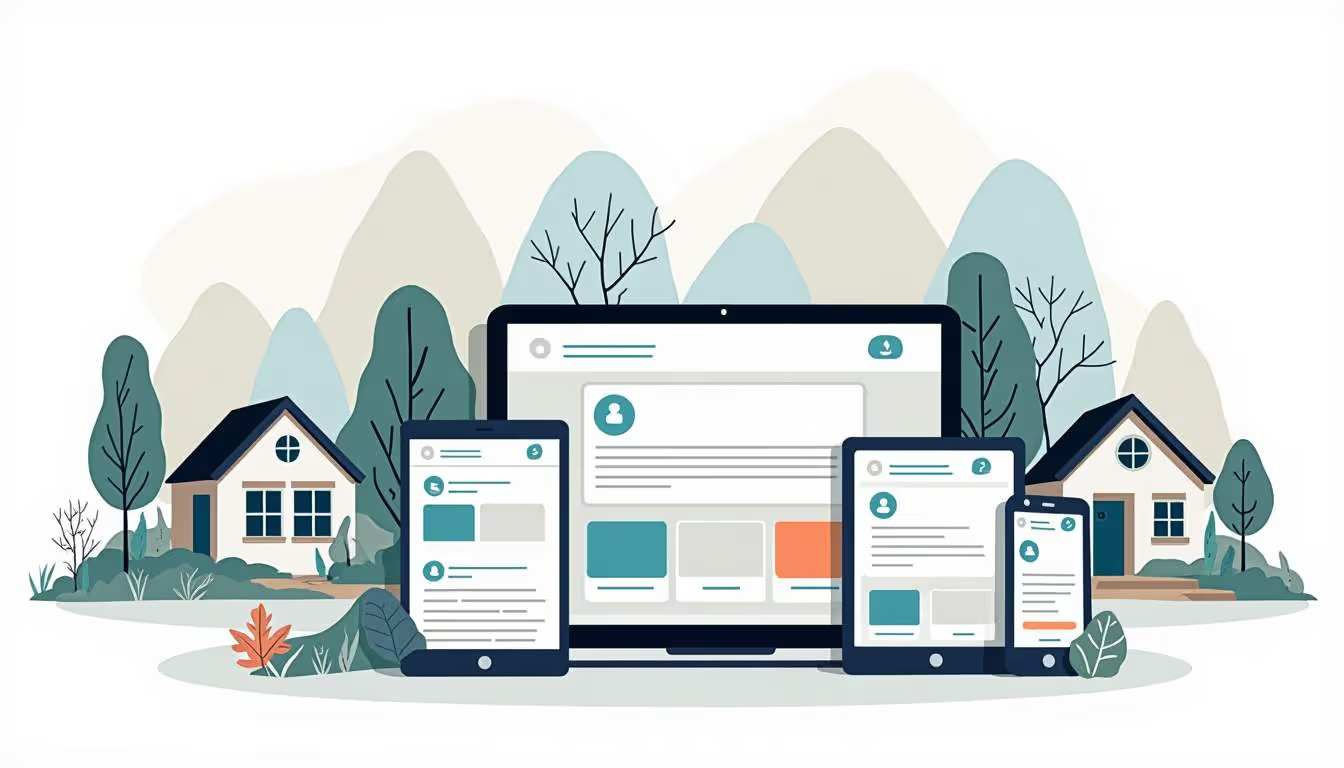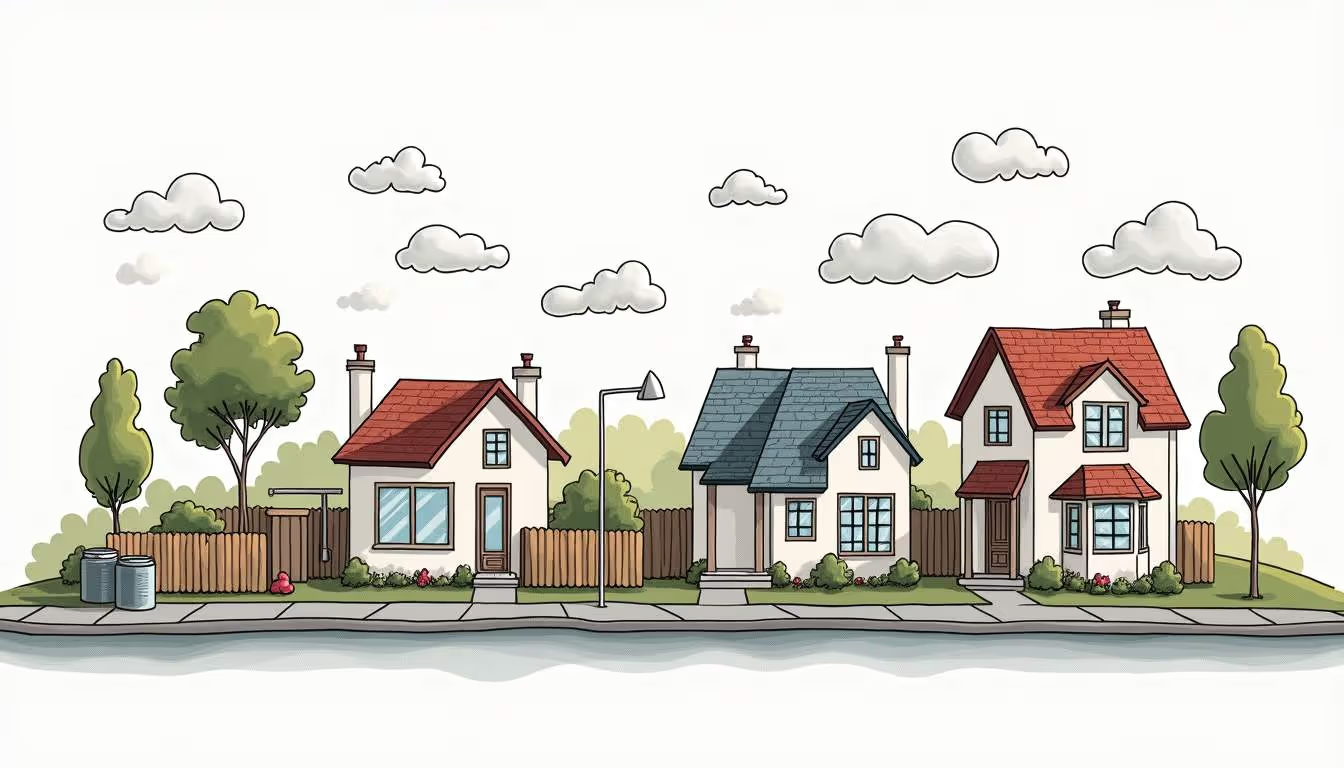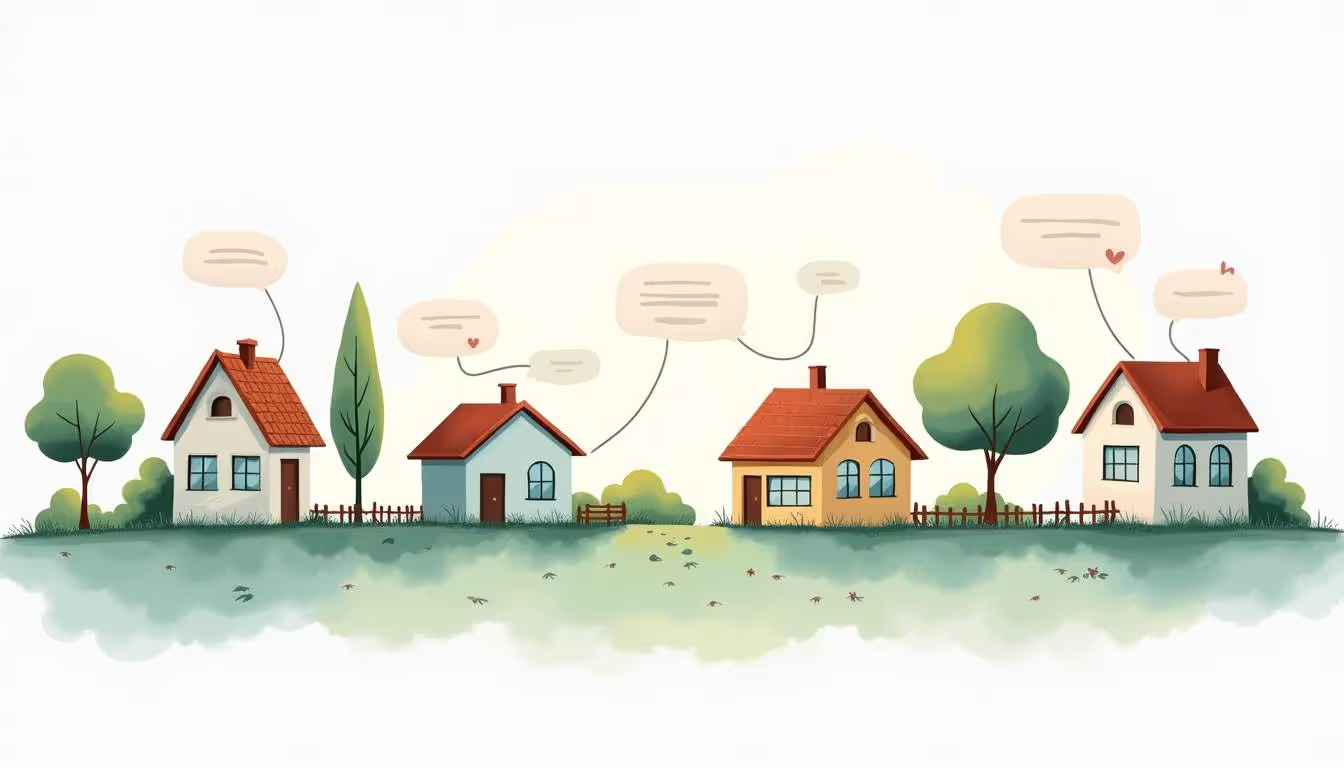Top Homeowner Communication Apps to Streamline Your Neighborhood Interaction
In today’s digitally connected world, neighborhood communication apps have become essential tools for homeowners seeking to foster vibrant, engaged communities. With over 80% of homeowners actively using these platforms—and 41% engaging daily—it's clear that these apps are transforming how neighbors connect, share information, and collaborate on community matters. This article explores the top homeowner communication apps designed to streamline neighborhood interaction, enhance community experiences, and simplify everyday tasks.
Why Homeowner Communication Apps Matter
Neighborhood apps are more than just social platforms; they serve as vital hubs for communication, safety, and community building. Homeowners increasingly rely on these tools to stay informed about local events, report issues, and build relationships with neighbors. The convenience of digital interaction complements traditional face-to-face engagement, making it easier than ever to foster a sense of belonging.
Moreover, these apps contribute to improved community satisfaction. Studies show that 70% of residents feel that community events and communication significantly enhance their overall experience. This highlights the importance of accessible, user-friendly platforms that encourage participation and keep residents connected.
In addition to facilitating communication, homeowner apps often include features that promote safety and security within neighborhoods. For instance, many platforms allow users to report suspicious activities or share alerts about local crime, creating a more vigilant community. This collective awareness can deter potential threats and foster a sense of security among residents, making them feel more at ease in their own homes. Furthermore, these apps can serve as a valuable resource during emergencies, providing real-time updates and information that can be crucial for safety and preparedness.
Another significant aspect of homeowner communication apps is their role in promoting local businesses and services. Many platforms feature directories that highlight nearby shops, restaurants, and service providers, encouraging residents to support their local economy. By fostering these connections, apps not only help homeowners discover new offerings in their area but also strengthen the community's economic fabric. This symbiotic relationship between residents and local businesses can lead to a more vibrant and engaged neighborhood, where everyone benefits from a thriving local marketplace.
Key Features to Look for in Neighborhood Communication Apps
When selecting a communication app for your neighborhood, certain features stand out as essential for maximizing engagement and usability:
- Real-time Messaging: Enables quick and direct communication among residents and community managers.
- Event Coordination: Tools for organizing and promoting local events encourage participation and foster community spirit.
- Safety Alerts: Immediate notifications about neighborhood safety issues or emergencies help keep everyone informed and secure.
- Self-Service Portals: Allow residents to handle rent payments, service requests, or maintenance scheduling conveniently online. With 65% of residents preferring self-service portals, this feature is increasingly important.
- Integration with Home Improvement Resources: Given that 78% of home improvement customers start their projects with online research, apps that offer access to trusted local service providers or product recommendations add great value.
In addition to these core features, it’s beneficial for communication apps to include a community bulletin board. This virtual space can serve as a hub for sharing local news, announcements, or even lost-and-found notices, fostering a sense of belonging among residents. By providing a platform for residents to share their thoughts or concerns, the app can enhance transparency and encourage dialogue, making it easier for neighbors to connect over shared interests or issues.
Furthermore, a robust feedback mechanism within the app allows residents to voice their opinions on community matters, such as proposed changes to local regulations or upcoming projects. This not only empowers residents but also helps community managers gauge the pulse of the neighborhood, ensuring that decisions reflect the collective desires of the community. The inclusion of polls or surveys can facilitate this process, making it easier to gather insights and promote active participation in neighborhood governance.
Top Homeowner Communication Apps in 2024
Here are some of the leading apps that homeowners and community managers are using to streamline neighborhood interaction and enhance the living experience.

Nextdoor
Nextdoor is one of the most widely used neighborhood platforms, boasting millions of users nationwide. It offers a comprehensive suite of features, including real-time messaging, event listings, and safety alerts. Its user-friendly interface encourages residents to share recommendations, organize community events, and stay updated on local news.
One of Nextdoor’s strengths is its emphasis on verified residents, which fosters trust and accountability. This is crucial because 84% of customers say that their experience with a company or service provider is as important as the product itself—trust within the community directly impacts satisfaction. Additionally, Nextdoor has introduced features that allow users to create polls and surveys, enabling communities to gather opinions on various topics, from neighborhood improvements to social events. This engagement not only strengthens community bonds but also ensures that residents feel heard and valued.
Neighborland
Neighborland focuses on community engagement and civic participation. It empowers residents to collaborate on neighborhood projects, provide feedback to local officials, and participate in decision-making processes. This app is particularly valuable for communities looking to increase resident involvement in planning and development.
By facilitating transparent communication and collective problem-solving, Neighborland helps build stronger, more resilient neighborhoods. The platform also offers tools for residents to propose new initiatives, such as community gardens or local art projects, which can lead to a more vibrant and connected living environment. By fostering a sense of ownership and pride in their neighborhoods, Neighborland encourages residents to take an active role in shaping the future of their communities.
Front Steps
Front Steps is tailored for multifamily communities and homeowner associations (HOAs). It combines communication tools with management features such as maintenance requests and amenity reservations. Given that 70% of residents in multifamily communities are more likely to renew their lease if they have a positive experience, platforms like Front Steps play a vital role in resident retention.
The app’s self-service portals streamline administrative tasks, making it easier for residents to manage their living experience independently. Moreover, Front Steps integrates feedback mechanisms that allow residents to rate their experiences with maintenance services or community events, providing valuable insights for property managers. This data-driven approach not only enhances service quality but also helps build a sense of community by ensuring that residents feel their voices are heard and their needs are met.
Ring Neighbors
Ring Neighbors is a community safety-focused app that integrates with Ring security devices. It allows neighbors to share real-time crime and safety alerts, fostering a vigilant and connected community. Safety remains a top priority for homeowners, and this app’s instant notifications help users stay informed and prepared.
In addition to crime alerts, Ring Neighbors encourages users to share tips on neighborhood watch initiatives and safety practices, creating a proactive approach to community security. The app also features a neighborhood map that highlights recent incidents and safety concerns, allowing residents to visualize trends in their area. By promoting a culture of awareness and collaboration, Ring Neighbors not only enhances safety but also strengthens the ties between neighbors, making communities feel more secure and united.
HOALife
HOALife is designed specifically for HOAs, offering tools for communication, document sharing, and event management. Its intuitive platform helps community managers keep residents informed and engaged, which is essential for maintaining a harmonious neighborhood atmosphere.
Furthermore, HOALife includes features for financial transparency, allowing residents to view budget reports and upcoming assessments directly through the app. This level of transparency fosters trust between homeowners and their associations, as residents can see how their dues are being utilized. Additionally, HOALife facilitates the organization of community meetings and social gatherings, encouraging participation and collaboration among residents. By creating a space where homeowners can easily connect and communicate, HOALife plays a crucial role in building a thriving community atmosphere.
Enhancing Community Experience Through Technology
Beyond basic communication, these apps contribute to a richer community experience by supporting various aspects of neighborhood life. For example, 70% of residents report that community events and communication improve their overall experience, underscoring the importance of event promotion features within these platforms.
Additionally, the preference for digital communication channels is clear: 65% of homeowners favor messaging apps over phone calls when interacting with service providers. Neighborhood apps that incorporate messaging capabilities align perfectly with this trend, offering convenient and preferred communication methods.
Integrating Home Improvement and Service Features
Home improvement is a significant focus for many homeowners, with 78% starting their projects through online research and 65% researching products before purchasing. Communication apps that integrate home improvement resources, such as trusted local contractors, virtual visualization tools, or product reviews, provide added value to residents.

Furthermore, 70% of home improvement professionals agree that online reviews significantly impact their reputation. Neighborhood apps that facilitate review sharing and recommendations help homeowners make informed decisions while supporting local businesses.
Future Trends in Neighborhood Communication
The evolution of homeowner communication apps is closely tied to broader digital transformation trends in the home improvement and real estate industries. In the past three years, 70% of home improvement companies have adopted e-commerce platforms, reflecting a shift toward online convenience and accessibility.
Looking ahead, expect neighborhood apps to increasingly incorporate features like virtual reality for home renovation visualization, AI-driven community insights, and enhanced integration with smart home devices. These innovations will further streamline communication and elevate the resident experience.
Conclusion
Effective communication is the cornerstone of thriving neighborhoods. With over 80% of homeowners actively using neighborhood apps, these platforms are indispensable tools for fostering engagement, safety, and convenience. Whether through event coordination, safety alerts, or integrated home improvement resources, the right communication app can transform how residents interact and experience their community.

Choosing an app that aligns with your community’s needs—offering robust messaging, self-service portals, and trusted local connections—will ensure that your neighborhood remains connected, informed, and vibrant in the digital age.








